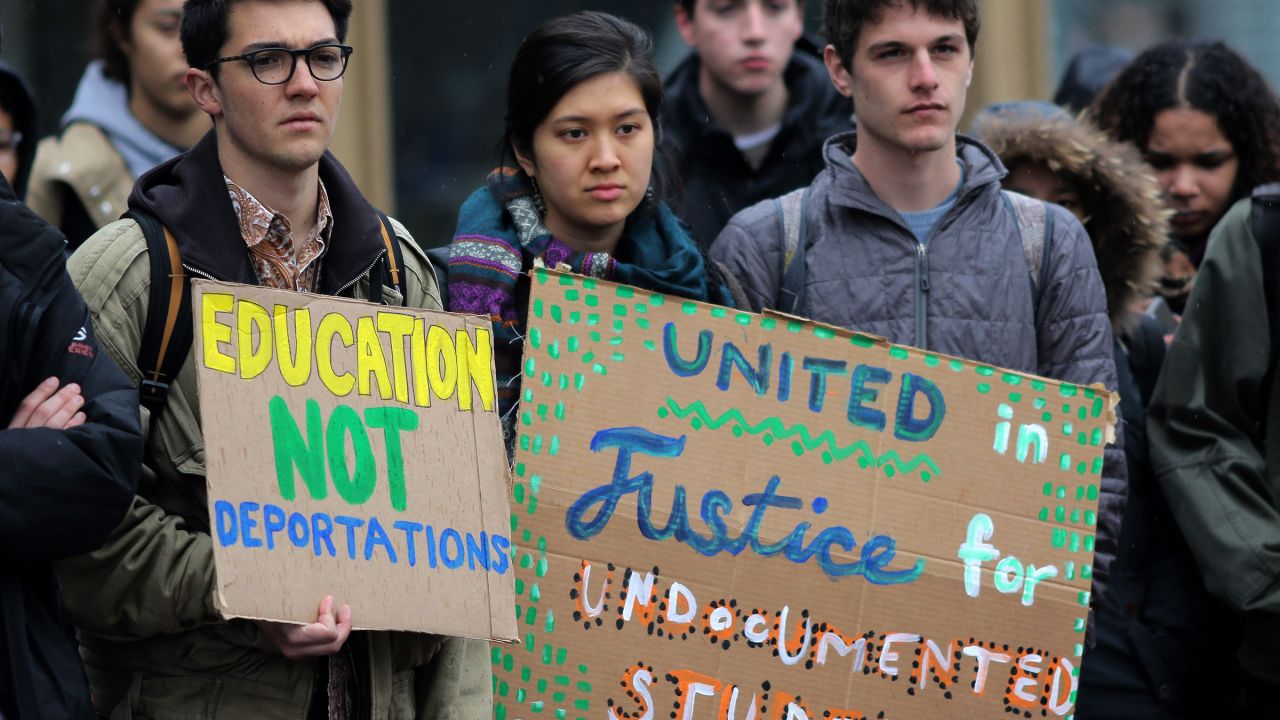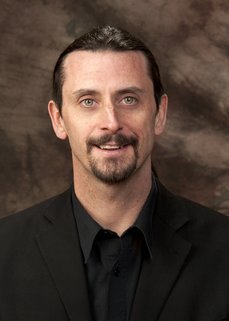
Students participate in a rally at the Tufts University campus on April 7, by the group Tufts United for Immigrant Justice. (Photo by Lane Turner/The Boston Globe via Getty Images)
This post originally appeared at Common Dreams.
“My anxiety level is rising, I’ve had difficulty sleeping. I’ve had difficulty talking with my siblings,” said Laura Vivaldo, senior political science major at Northern Illinois University. Like an estimated eleven million others in the US, Laura is undocumented.
Laura continues: “I question my own worth and my rights to live in this country. Any rights I had with DACA [Deferred Action for Childhood Arrivals] got pulled from right underneath my feet. I had certain plans for my future but now I am afraid. I don’t have the assurance that I’m not being deported. I feel I can’t share these worries with faculty and staff on this campus. And it’s affecting my classes.”
Undeterred, Laura is the president of a student group called Dream Action NIU, named after the DREAM Act, which would offer a path to legal citizenship. DREAM Action held a Coming Out of the Shadows event on Wednesday, March 29. Introducing the speakers, Laura explained, “Now more than ever we must uplift the stories of undocumented people. Our stories have the potential to humanize immigration and begin conversation about the factors that push people to immigrate to the United States. Coming Out of the Shadows is an act of resistance against rhetoric that discredits the narratives of undocumented immigrants.”
Erica Vivaldo, a Nonprofit and NGO Studies major, said, “only 8 percent of the undocumented student population at NIU benefit from private funding. Funding for all students regardless of their immigration status is one way that the university could positively impact the number of undocumented students graduating and graduating on time.”
Over 270 attendees — students, staff, faculty and administration — showed their support. Laura said that this support was essential: “I felt relieved, supported and empowered.” Sandy Lopez, one of DREAM Action’s advisers, said “This record number attendance can be attributed to the coalition building that was done by both NIU student organizations and the local community.”
But there remains much work to be done. As Erica notes, events like Coming Out of the Shadows help to galvanize local communities: “The data and stories from the speakers motivated me to continue being involved. It is one thing to talk in class or hear from the news of the issues the undocumented community faces. It is a completely different intake when you hear and feel the emotions expressed from the people who are undocumented.”
On another level, the act of “coming out” helps shift the public conversation and eventually impacts policies. Laura cited inspiration from the LGBT movement noted in her introductory remarks. Nineteen years after the Defense of Marriage Act passed with 84 percent of Congressional votes, the US Supreme Court upheld the legality of same-sex marriage. Recently the NCAA’s boycott of North Carolina over the state’s so-called “bathroom bill” targeting transgendered individuals forced the state legislature to scuttle the bill.
There are obvious differences: the LGBT movement includes white, middle-class or elite men, with powerful social capital and political clout.
However, as University of California Irvine anthropologist Leo Chavez notes, there may be signs of similar shifts, often racialized in what he calls the “Latino Threat.” In 1994, Gov. Pete Wilson championed Proposition 187, aimed at cutting off services to undocumented families such as education, health care and worker’s rights protection. The one-term Republican governor in a difficult re-election contest both rode the wave of — and fomented — anti-immigrant rhetoric. The measure easily passed with a two-thirds margin, before being thrown out in court.
Now, California is 180 degrees from 187.
Chavez points to demographic shifts, but also the dedication and organizing of Chicano-Latino groups within the country’s most populous state. While xenophobia and nativism helped push Trump over the electoral edge, Californians — 1 in 8 US Americans — resoundingly rejected this anti-immigrant hysteria, giving Democrat Hillary Clinton a margin of victory of over 4 million votes, almost twice Trump’s (61.73 percent versus 31.62 percent).
The Trump administration is investing greater resources for Immigration and Customs Enforcement (ICE) than ever before, what Chavez calls the “immigration industrial complex,” wherein people are sent to often private prisons that have been guaranteed minimum stays with the only crime being one’s undocumented status, such as Guadalupe Garcia de Rayos, deported following a routine annual follow-up.
“It’s an income and employment generating machine,” said Chavez, “and it’s going to be hard to stop.
But people are trying, says anthropologist Josiah Heyman, the Director of Interamerican and Border Studies at the University of Texas at El Paso. “One of the ways these national struggles are going to be fought are in local communities’ attitudes and responses of local law enforcement.” One victory was in Phoenix. In November, voters ousted Maricopa County Sheriff Joe Arpaio, known for his anti-immigrant and racial profiling zeal.
Heyman continued, “What the current administration would like to have is lots of Sheriff Arpaios all over the country. What they’re getting is a mixed reaction, with some openly resisting. It’s a kaleidoscope of responses.” Heyman pointed to Doña Ana County, New Mexico, where county commissioners are attempting to rein in the sheriff.
Heyman offered analyses of the current ICE policy manuals at a recent Society for Applied Anthropology roundtable in which Chavez also presented. Heyman said that many local law enforcement officials are openly critical of the new policies that “get in the way of doing their jobs, which requires good relationships with the community.”
A new Texas bill, SB4, threatens this, taking local control away. Says Heyman, “State police and border patrols don’t have roots in the community. They’re often seen as an occupying force.”
On Monday, California took a decidedly different approach. SB54, declaring the state — the world’s sixth largest economy — a sanctuary, passed the Senate 27-12, along party lines.
Activists all across the country like Laura, are drawing inspiration from the events in California. However, given the 22-month budget impasse that is forcing public universities to cancel classes, “it’s not likely that Illinois will be able to follow California’s lead in declaring the state a sanctuary.” The Illinois State Senate is considering a “TRUST” Act (SB 31) barring immigration officials from certain spaces.
While universities and jurisdictions can have what Heyman called “nuanced approaches,” some are afraid of coming out as “sanctuaries” because of the threat of losing federal funding.
While it might be dismissed by some university administrations as quibbling over symbols, targeting undocumented people is just that: people like Laura are treated as symbols, dehumanized, demonized and blamed for all sorts of social ills.
And given Trump administration policies, these symbols are already hurting public universities. Cash-strapped universities like ours, who have seen public support steadily diminish, rely to a much greater extent than ever on tuition, particularly foreign students. Since the so-called “Muslim Ban” many foreign students are fearful and spend their tuition dollars and $32 billion in living expenses elsewhere.
As Laura notes, “If you consider yourself an ally to the undocumented community, act as an ally. Do not self-declare yourself an ally without doing the work.” Educators for Fair Consideration published a “top-10” list to support undocumented students, which begins with listening and ends with empowerment and creating spaces for stories and creative expression.
At Coming Out of the Shadows, DREAM Action announced five “asks” to the NIU Community, including passage of the ACCESS Bill (H.B. 2394), more funding for undocumented students and asking candidates for local office on Tuesday’s elections to publicly take a stand.
Laura, who first came out in front of the Supreme Court in 2012, encourages other undocumented people not to give up. “You are not alone. Find your community, share your story and create a plan of action.”




